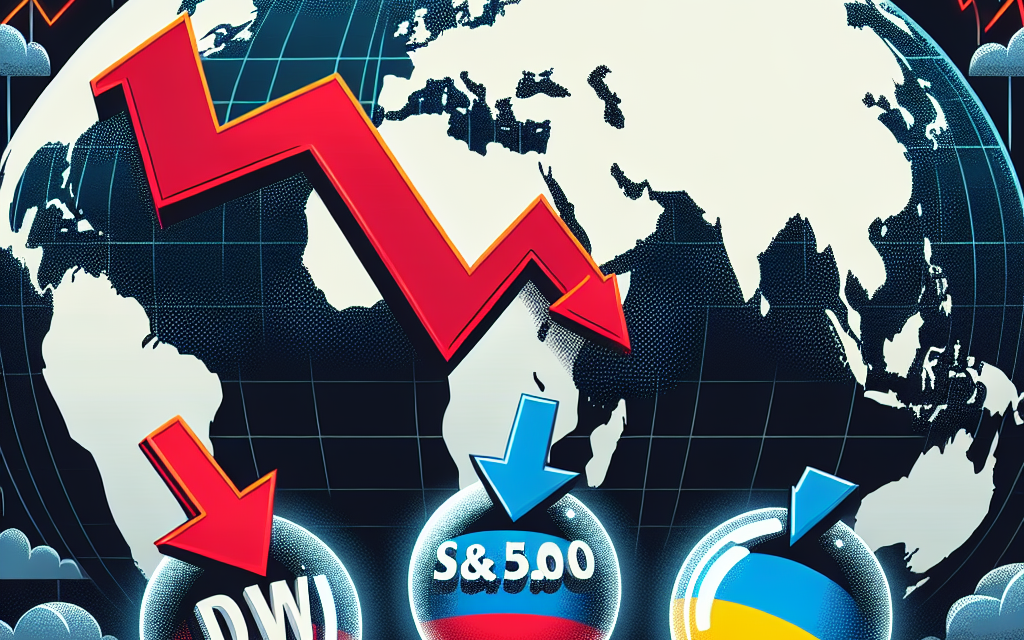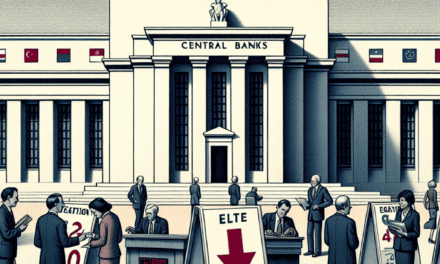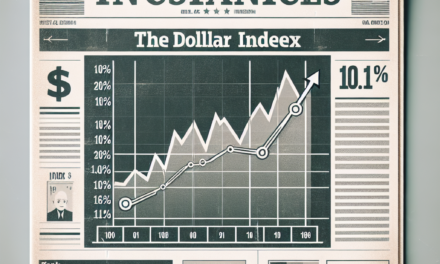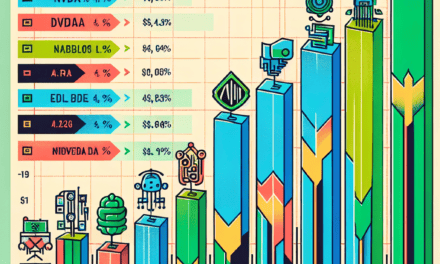“Market Jitters: Indices Slide as Russia-Ukraine Tensions Escalate”
Introduction
Amid escalating tensions between Russia and Ukraine, global financial markets are experiencing heightened volatility, with major U.S. indices such as the Dow Jones Industrial Average, the S&P 500, and the Nasdaq Composite witnessing notable declines. Investors are grappling with the potential economic repercussions of geopolitical instability, leading to a cautious approach in trading activities. The uncertainty surrounding the situation has prompted a shift towards safer assets, impacting market sentiment and contributing to the downward pressure on equities. As the crisis unfolds, market participants remain vigilant, closely monitoring developments and assessing their implications for global economic stability and investment strategies.
Impact Of Geopolitical Tensions On Global Markets
The global financial markets have always been sensitive to geopolitical tensions, and the recent developments between Russia and Ukraine have once again underscored this vulnerability. As tensions escalate, investors are increasingly concerned about the potential economic repercussions, leading to a noticeable decline in major stock indices such as the Dow Jones Industrial Average, the S&P 500, and the Nasdaq Composite. This decline reflects the broader market sentiment, which is characterized by heightened uncertainty and risk aversion.
To begin with, geopolitical tensions often lead to increased volatility in financial markets. Investors tend to react to the uncertainty by reallocating their portfolios, often moving away from equities and into safer assets such as gold and government bonds. This flight to safety is evident in the recent market behavior, where we have observed a significant sell-off in stocks, particularly those that are perceived as more vulnerable to geopolitical risks. The Dow, S&P 500, and Nasdaq have all experienced declines as investors reassess their risk exposure in light of the unfolding situation in Eastern Europe.
Moreover, the impact of these tensions is not confined to stock markets alone. The energy sector, in particular, is highly susceptible to geopolitical disruptions, given that Russia is a major global supplier of oil and natural gas. Any potential conflict or sanctions could lead to supply chain disruptions, causing energy prices to spike. This, in turn, can have a ripple effect on global markets, as higher energy costs can lead to increased inflationary pressures, affecting consumer spending and corporate profitability. Consequently, sectors that are heavily reliant on energy inputs may face additional challenges, further contributing to the overall market decline.
In addition to energy, other sectors such as technology and finance are also feeling the impact. The technology sector, which has been a significant driver of market growth in recent years, is particularly sensitive to geopolitical risks due to its global supply chains and reliance on international markets. Any disruption in trade or increased regulatory scrutiny can adversely affect technology companies, leading to a decline in their stock prices. Similarly, the financial sector is exposed to geopolitical risks through its global operations and investments. Uncertainty in international markets can lead to increased volatility in currency and bond markets, affecting the profitability of financial institutions.
Furthermore, the broader economic implications of the Russia-Ukraine tensions cannot be overlooked. Prolonged geopolitical instability can lead to reduced business confidence and investment, as companies may delay or scale back their expansion plans amid uncertainty. This can have a dampening effect on economic growth, both regionally and globally. Central banks, already grappling with inflationary pressures, may find it challenging to navigate this complex environment, as they balance the need to support economic growth with the imperative to maintain price stability.
In conclusion, the decline in the Dow, S&P 500, and Nasdaq amid the Russia-Ukraine tensions highlights the profound impact that geopolitical events can have on global markets. As investors navigate this uncertain landscape, they must remain vigilant and adaptable, considering both the immediate and long-term implications of these developments. While the situation remains fluid, the interconnectedness of global markets means that the reverberations of geopolitical tensions will likely continue to be felt across various sectors and regions, underscoring the importance of a cautious and informed approach to investment decisions.
Analyzing The Dow’s Response To International Conflicts
In recent weeks, the financial markets have been closely monitoring the escalating tensions between Russia and Ukraine, which have significantly impacted global economic stability. The Dow Jones Industrial Average, along with the S&P 500 and Nasdaq, has experienced notable declines as investors react to the unfolding geopolitical situation. This downturn can be attributed to a combination of factors, including heightened uncertainty, potential disruptions in global trade, and the broader implications for international relations.
Historically, the Dow has been sensitive to international conflicts, often reflecting investor sentiment and the perceived risk associated with geopolitical instability. In the current scenario, the market’s response underscores the interconnectedness of global economies and the ripple effects that regional conflicts can have on financial markets worldwide. As tensions between Russia and Ukraine intensify, investors are increasingly concerned about the potential for economic sanctions, disruptions in energy supplies, and the broader impact on global trade networks.
Moreover, the Dow’s decline is not occurring in isolation. The S&P 500 and Nasdaq have also experienced downward trends, highlighting a broader market reaction to the geopolitical tensions. This collective response is indicative of the pervasive uncertainty that currently characterizes the investment landscape. Investors are grappling with the challenge of assessing the potential economic fallout from the conflict, which is compounded by existing concerns about inflation, supply chain disruptions, and the ongoing recovery from the COVID-19 pandemic.
In addition to these immediate concerns, the market’s response to the Russia-Ukraine tensions is also shaped by historical precedents. Past international conflicts have often led to short-term volatility in financial markets, as investors seek to recalibrate their portfolios in response to changing risk assessments. However, it is important to note that while initial reactions may be negative, markets have historically demonstrated resilience over the long term, often recovering as geopolitical situations stabilize and uncertainties are resolved.
Furthermore, the current market environment is characterized by a heightened sensitivity to news and developments related to the conflict. Investors are closely monitoring diplomatic efforts, military movements, and economic sanctions, all of which have the potential to influence market dynamics. This heightened vigilance is reflected in increased market volatility, as traders react swiftly to new information and adjust their strategies accordingly.
In light of these developments, it is crucial for investors to maintain a balanced perspective and consider the broader context of the market’s response to international conflicts. While the immediate impact of the Russia-Ukraine tensions is evident in the declines of the Dow, S&P 500, and Nasdaq, it is essential to recognize that markets are inherently forward-looking. As such, investors should focus on long-term trends and underlying economic fundamentals, rather than being swayed by short-term fluctuations driven by geopolitical events.
In conclusion, the recent declines in the Dow, S&P 500, and Nasdaq amid the Russia-Ukraine tensions highlight the complex interplay between geopolitical events and financial markets. While the immediate impact is characterized by uncertainty and volatility, historical patterns suggest that markets have the capacity to recover as stability is restored. As investors navigate this challenging environment, a focus on long-term strategies and a comprehensive understanding of the broader economic landscape will be essential in managing risk and capitalizing on future opportunities.
S&P 500: Navigating Uncertainty In Volatile Times
In recent weeks, the financial markets have been gripped by heightened volatility, largely driven by escalating tensions between Russia and Ukraine. This geopolitical uncertainty has cast a shadow over global economic stability, prompting investors to reassess their risk exposure. The S&P 500, a key barometer of U.S. equity performance, has not been immune to these pressures, experiencing notable declines alongside the Dow Jones Industrial Average and the Nasdaq Composite. As investors navigate these turbulent times, understanding the underlying factors contributing to market fluctuations becomes crucial.
The ongoing conflict between Russia and Ukraine has introduced a significant degree of unpredictability into the global economic landscape. The potential for further escalation has raised concerns about disruptions to energy supplies, given Russia’s pivotal role as a major exporter of oil and natural gas. Consequently, energy prices have surged, adding inflationary pressures to an already strained global economy. This has led to increased volatility in the equity markets, as investors grapple with the implications of rising costs on corporate profitability and consumer spending.
Moreover, the geopolitical tensions have exacerbated existing supply chain challenges, which have been a persistent issue since the onset of the COVID-19 pandemic. The interconnected nature of global trade means that any disruption in one region can have far-reaching effects, impacting production timelines and increasing costs for businesses worldwide. As a result, companies within the S&P 500 are facing mounting pressures to manage these challenges while maintaining their competitive edge.
In addition to geopolitical factors, the actions of central banks have also played a pivotal role in shaping market dynamics. The Federal Reserve, in particular, has been closely watched by investors as it navigates the delicate balance between supporting economic growth and curbing inflation. With inflation rates reaching multi-decade highs, the Fed has signaled its intention to tighten monetary policy through interest rate hikes. This has led to increased uncertainty in the markets, as investors weigh the potential impact of higher borrowing costs on economic activity and corporate earnings.
Despite these challenges, it is important to recognize that periods of volatility can also present opportunities for astute investors. Historically, market downturns have often been followed by periods of recovery and growth, as underlying economic fundamentals reassert themselves. For those with a long-term investment horizon, maintaining a diversified portfolio and focusing on quality assets can help mitigate risks and position for future gains.
Furthermore, companies within the S&P 500 that demonstrate resilience and adaptability in the face of adversity are likely to emerge stronger in the long run. Businesses that can effectively navigate supply chain disruptions, manage cost pressures, and capitalize on emerging trends will be well-positioned to deliver value to shareholders. As such, investors may benefit from closely monitoring corporate earnings reports and management commentary to identify potential opportunities.
In conclusion, the current market environment is characterized by a confluence of geopolitical tensions, inflationary pressures, and central bank actions, all of which contribute to heightened volatility. While these factors present challenges, they also underscore the importance of maintaining a disciplined investment approach. By staying informed and focusing on long-term objectives, investors can navigate the uncertainty and position themselves for success in the ever-evolving landscape of the S&P 500.
Nasdaq’s Performance Amid Rising Global Concerns
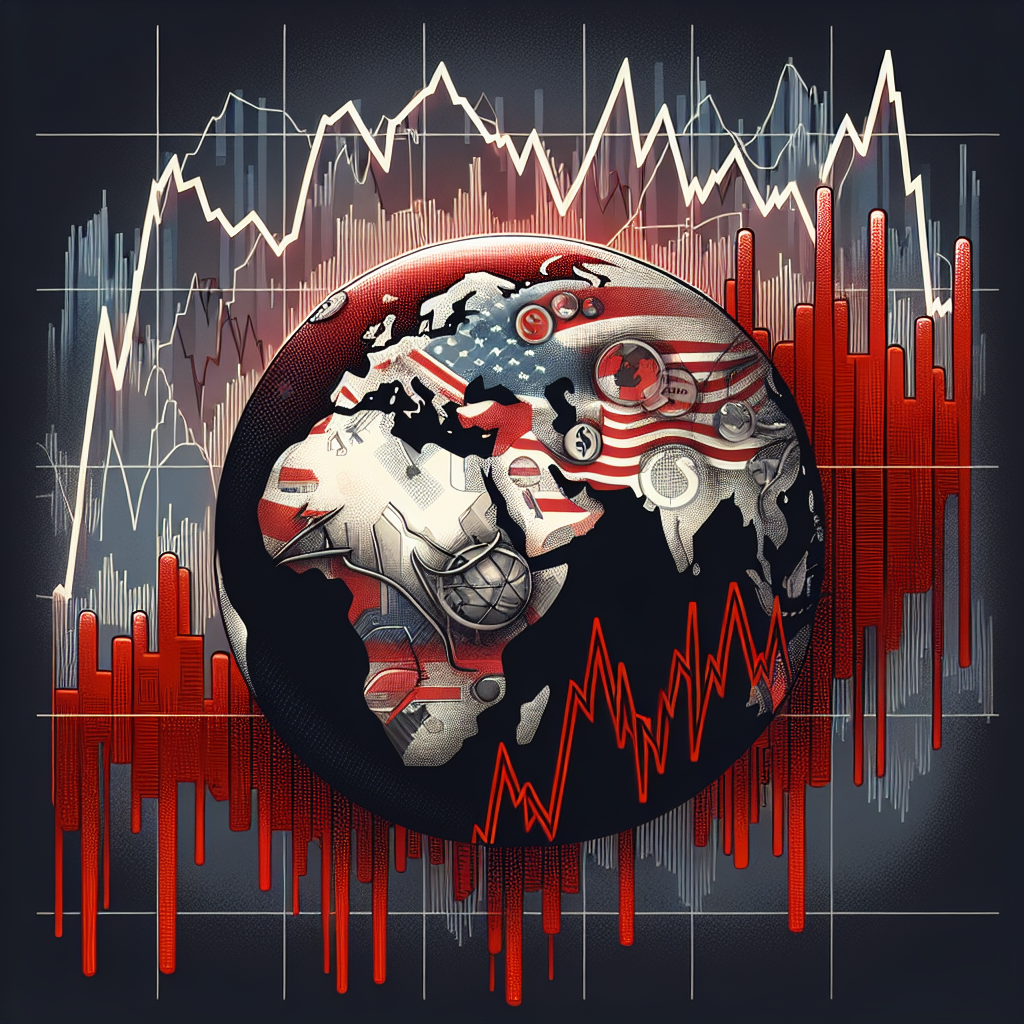
In recent weeks, the financial markets have been closely monitoring the escalating tensions between Russia and Ukraine, which have significantly impacted global economic stability. The Nasdaq, a major stock index that primarily comprises technology and growth-oriented companies, has not been immune to these geopolitical developments. As investors grapple with the uncertainty surrounding the situation, the Nasdaq has experienced notable declines, reflecting broader market apprehensions.
The ongoing conflict has introduced a layer of unpredictability that has reverberated across global markets. Investors are particularly concerned about the potential for further economic sanctions against Russia, which could disrupt global supply chains and energy markets. This uncertainty has led to increased volatility, with the Nasdaq experiencing fluctuations as market participants react to the latest developments. The technology sector, which is heavily represented in the Nasdaq, is particularly sensitive to geopolitical risks due to its global supply chains and reliance on international markets.
Moreover, the rising tensions have exacerbated existing concerns about inflation and interest rates. Central banks around the world, including the Federal Reserve, are already grappling with how to manage inflationary pressures without stifling economic growth. The added geopolitical risk has complicated these efforts, as energy prices, particularly oil and gas, have surged in response to the conflict. This has further fueled inflationary pressures, prompting investors to reassess their risk exposure and adjust their portfolios accordingly.
In addition to these macroeconomic factors, the Nasdaq’s performance has been influenced by company-specific developments. Many technology companies have reported earnings that, while generally positive, have not met the high expectations set by the market. This has led to a reassessment of valuations, particularly for high-growth stocks that are more sensitive to changes in interest rates. As a result, some investors have shifted their focus towards more defensive sectors, contributing to the downward pressure on the Nasdaq.
Despite these challenges, it is important to note that the Nasdaq’s decline is part of a broader market trend. The Dow Jones Industrial Average and the S&P 500 have also experienced declines, underscoring the widespread impact of the Russia-Ukraine tensions on investor sentiment. However, the technology sector’s prominence in the Nasdaq means that it is often more acutely affected by shifts in market dynamics, particularly those related to global economic conditions.
Looking ahead, the Nasdaq’s performance will likely continue to be influenced by developments in the Russia-Ukraine conflict, as well as broader economic indicators. Investors will be closely watching for any signs of de-escalation, which could provide a boost to market confidence. Additionally, upcoming economic data releases and central bank policy decisions will be critical in shaping market expectations and influencing investor behavior.
In conclusion, the Nasdaq’s recent decline amid rising global concerns highlights the complex interplay between geopolitical events and financial markets. As the situation continues to evolve, investors will need to remain vigilant and adaptable, balancing the risks and opportunities presented by this challenging environment. While uncertainty remains a defining feature of the current market landscape, the resilience of the technology sector and its capacity for innovation may ultimately provide a foundation for future growth once stability is restored.
Investor Strategies During Market Declines
In the wake of escalating tensions between Russia and Ukraine, global financial markets have experienced significant volatility, with major indices such as the Dow Jones Industrial Average, the S&P 500, and the Nasdaq Composite all registering declines. This geopolitical uncertainty has prompted investors to reassess their strategies, seeking ways to navigate the turbulent market environment effectively. As the situation unfolds, it is crucial for investors to adopt a disciplined approach, focusing on long-term objectives while remaining agile in response to short-term fluctuations.
One of the primary strategies investors might consider during market declines is diversification. By spreading investments across various asset classes, sectors, and geographic regions, investors can mitigate risk and reduce the impact of any single market event on their overall portfolio. Diversification acts as a buffer, allowing investors to weather downturns in specific areas while potentially benefiting from gains in others. For instance, while equities may be under pressure due to geopolitical tensions, other asset classes such as bonds or commodities might offer stability or even growth opportunities.
In addition to diversification, maintaining a long-term perspective is essential during periods of market decline. It is important to remember that market volatility is a natural part of investing, and history has shown that markets tend to recover over time. By focusing on long-term goals and avoiding the temptation to make impulsive decisions based on short-term market movements, investors can better position themselves for future growth. This approach requires patience and discipline, as well as a clear understanding of one’s risk tolerance and investment objectives.
Moreover, investors should consider rebalancing their portfolios in response to market declines. Rebalancing involves adjusting the allocation of assets within a portfolio to maintain the desired level of risk and return. During periods of market volatility, certain asset classes may become over- or under-weighted relative to an investor’s target allocation. By periodically reviewing and rebalancing their portfolios, investors can ensure that they remain aligned with their long-term investment strategy, potentially capitalizing on opportunities that arise from market dislocations.
Another strategy to consider is the use of dollar-cost averaging, which involves investing a fixed amount of money at regular intervals, regardless of market conditions. This approach can help investors avoid the pitfalls of trying to time the market, as it reduces the impact of short-term price fluctuations and allows for the accumulation of assets over time. By consistently investing, even during market declines, investors can take advantage of lower prices and potentially enhance their long-term returns.
Furthermore, it is essential for investors to stay informed about the broader economic and geopolitical landscape. Understanding the factors driving market movements can provide valuable insights and help investors make more informed decisions. However, it is equally important to filter out noise and focus on information that is relevant to one’s investment strategy. Engaging with financial advisors or utilizing reputable financial news sources can aid in this process, ensuring that investors have access to accurate and timely information.
In conclusion, while the current market environment presents challenges, it also offers opportunities for those who are prepared to navigate it thoughtfully. By employing strategies such as diversification, maintaining a long-term perspective, rebalancing portfolios, and utilizing dollar-cost averaging, investors can position themselves to weather the storm and potentially benefit from future market recoveries. As always, staying informed and disciplined in one’s approach will be key to successfully managing investments during periods of market decline.
Historical Market Reactions To Geopolitical Events
Throughout history, financial markets have often reacted with volatility to geopolitical events, and the recent decline in the Dow, S&P 500, and Nasdaq amid escalating tensions between Russia and Ukraine is no exception. Understanding how markets have historically responded to similar geopolitical crises can provide valuable insights into current market behavior and potential future trends.
Geopolitical events, by their very nature, introduce uncertainty into global markets. Investors, driven by fear of the unknown, often react by pulling back from equities and seeking safer assets. This flight to safety can lead to declines in major stock indices, as seen in the current situation with the Dow, S&P 500, and Nasdaq. Historically, such reactions are not uncommon. For instance, during the Cuban Missile Crisis in 1962, the stock market experienced significant volatility as tensions between the United States and the Soviet Union reached a boiling point. Similarly, the Gulf War in 1990 and the September 11 attacks in 2001 also saw sharp market declines, followed by periods of recovery as the geopolitical landscape stabilized.
Moreover, the impact of geopolitical events on markets is often influenced by the perceived duration and severity of the crisis. Short-lived events may cause temporary market disruptions, while prolonged conflicts can lead to sustained market downturns. For example, the Arab Spring, which began in late 2010, led to prolonged instability in the Middle East and North Africa, affecting global oil prices and, consequently, market performance. In contrast, the swift resolution of the Cuban Missile Crisis helped markets recover relatively quickly.
In addition to the immediate market reactions, geopolitical events can have long-term implications for global trade, energy prices, and economic growth, further influencing market dynamics. The ongoing tensions between Russia and Ukraine, for instance, have raised concerns about potential disruptions to energy supplies in Europe, given Russia’s significant role as a natural gas supplier. Such disruptions could lead to increased energy prices, impacting inflation and economic growth prospects, which in turn could weigh on market sentiment.
Furthermore, central banks and governments often play a crucial role in stabilizing markets during geopolitical crises. By implementing monetary and fiscal policies aimed at mitigating economic fallout, they can help restore investor confidence. During the 2008 financial crisis, for example, coordinated efforts by central banks worldwide helped stabilize financial markets and set the stage for recovery. In the current context, investors are closely watching how central banks, particularly the Federal Reserve, respond to the dual challenges of geopolitical tensions and rising inflation.
While historical patterns provide a framework for understanding market reactions to geopolitical events, it is important to recognize that each crisis is unique, with its own set of variables and potential outcomes. Consequently, investors must remain vigilant and adaptable, considering both historical precedents and current developments when making investment decisions.
In conclusion, the decline in the Dow, S&P 500, and Nasdaq amid Russia-Ukraine tensions is consistent with historical market reactions to geopolitical events. By examining past crises, investors can gain insights into potential market trajectories and the factors that may influence recovery. However, given the complex and evolving nature of geopolitical events, a cautious and informed approach remains essential for navigating the uncertainties that lie ahead.
Future Outlook: Market Recovery Post-Conflict
As global markets continue to grapple with the ongoing tensions between Russia and Ukraine, investors are keenly observing the potential for recovery once the conflict subsides. The recent declines in major indices such as the Dow Jones Industrial Average, the S&P 500, and the Nasdaq have underscored the volatility and uncertainty that geopolitical tensions can inject into financial markets. However, history suggests that markets often rebound once geopolitical conflicts are resolved, offering a glimmer of hope for investors looking toward the future.
In the short term, the market’s reaction to geopolitical tensions is often characterized by heightened volatility and risk aversion. Investors tend to seek safe-haven assets, such as gold and government bonds, while shying away from equities, which are perceived as riskier. This flight to safety can lead to sharp declines in stock indices, as has been observed with the recent downturns in the Dow, S&P 500, and Nasdaq. However, it is important to note that these reactions are typically driven by uncertainty and fear, rather than fundamental changes in the underlying economy or corporate performance.
As the conflict between Russia and Ukraine unfolds, the market’s focus will likely remain on developments that could either escalate or de-escalate tensions. Diplomatic efforts, sanctions, and military actions will all play a crucial role in shaping investor sentiment. Should a resolution be reached, or at least a significant de-escalation occur, markets may begin to stabilize and recover. Historically, once the immediate threat of conflict diminishes, investors often regain confidence, leading to a rebound in equity prices.
Moreover, the potential for market recovery post-conflict is supported by the resilience of the global economy. Despite the challenges posed by geopolitical tensions, the underlying fundamentals of many economies remain strong. In the United States, for instance, robust consumer spending, a strong labor market, and corporate earnings growth provide a solid foundation for economic recovery. Similarly, other major economies have shown resilience, with central banks ready to support growth through monetary policy measures if necessary.
In addition to economic fundamentals, the role of technology and innovation cannot be overlooked in driving market recovery. The Nasdaq, which is heavily weighted toward technology stocks, may benefit from continued advancements in sectors such as artificial intelligence, renewable energy, and biotechnology. These industries are poised for growth, regardless of geopolitical tensions, and could lead the charge in a broader market recovery.
Furthermore, the lessons learned from past conflicts suggest that diversification and a long-term investment perspective are key strategies for navigating market volatility. By spreading investments across different asset classes and geographies, investors can mitigate risks associated with geopolitical events. Additionally, maintaining a long-term view allows investors to ride out short-term fluctuations and benefit from the eventual recovery.
In conclusion, while the current market environment is undoubtedly challenging due to the Russia-Ukraine tensions, there is reason to be cautiously optimistic about the future. The potential for market recovery post-conflict is supported by strong economic fundamentals, technological innovation, and historical precedents. As investors navigate this period of uncertainty, a focus on diversification and long-term strategies will be essential in positioning for future growth.
Q&A
1. **Question:** What are the main stock indices mentioned in the market update?
**Answer:** The main stock indices mentioned are the Dow Jones Industrial Average, S&P 500, and Nasdaq Composite.
2. **Question:** What geopolitical event is influencing the market decline?
**Answer:** The tensions between Russia and Ukraine are influencing the market decline.
3. **Question:** How are investors reacting to the Russia-Ukraine tensions in terms of market behavior?
**Answer:** Investors are reacting with caution, leading to a decline in major stock indices as they assess the potential economic and geopolitical impacts.
4. **Question:** What sectors are most affected by the market decline?
**Answer:** Typically, sectors such as energy, financials, and technology might be affected, but the specific sectors impacted can vary based on the nature of the geopolitical tensions.
5. **Question:** Are there any safe-haven assets that investors are turning to amid the market decline?
**Answer:** Investors often turn to safe-haven assets like gold, U.S. Treasury bonds, and the U.S. dollar during times of geopolitical uncertainty.
6. **Question:** How might the Russia-Ukraine tensions impact global supply chains?
**Answer:** The tensions could disrupt global supply chains, particularly in energy and commodities, leading to increased volatility and potential shortages.
7. **Question:** What are analysts predicting for the market’s short-term future amid these tensions?
**Answer:** Analysts may predict continued volatility and caution in the markets as the situation develops, with potential for further declines if tensions escalate.
Conclusion
The recent decline in the Dow, S&P 500, and Nasdaq indices underscores the market’s sensitivity to geopolitical tensions, particularly the ongoing conflict between Russia and Ukraine. Investors are reacting to the uncertainty and potential economic repercussions, leading to increased volatility and risk aversion. This situation highlights the interconnectedness of global markets and the impact of geopolitical events on investor sentiment and market performance. As tensions persist, market participants may continue to exercise caution, potentially affecting short-term market dynamics and investment strategies.

